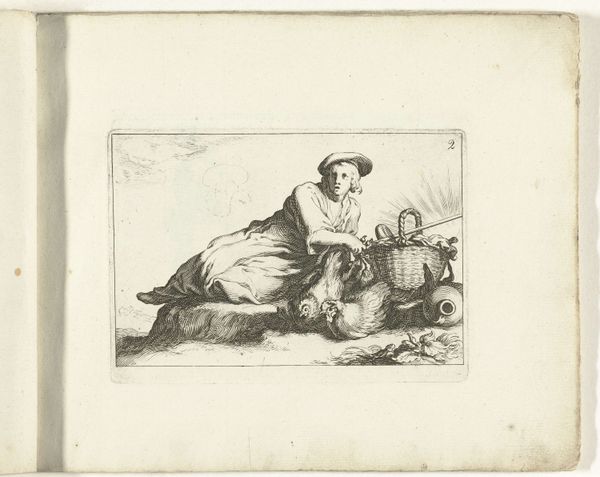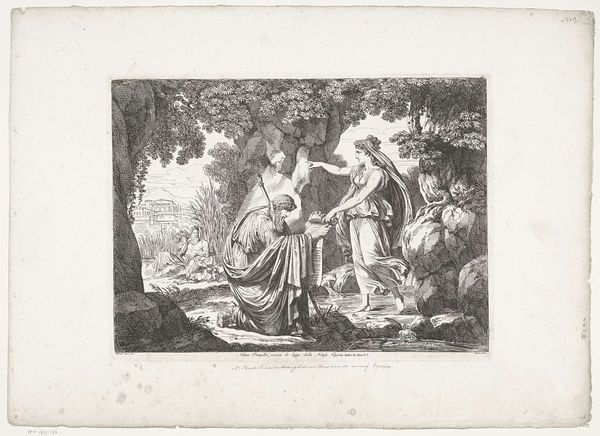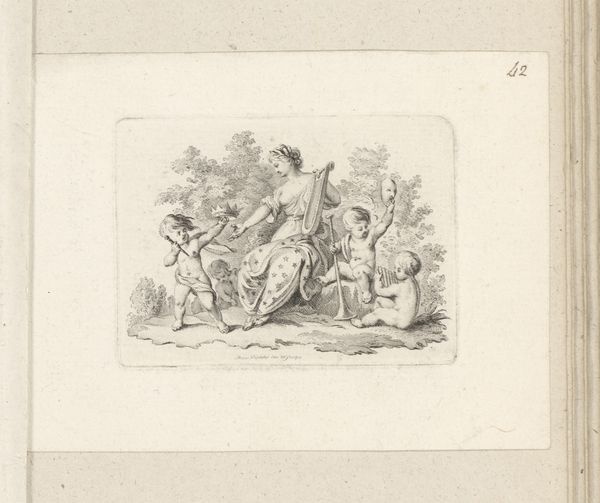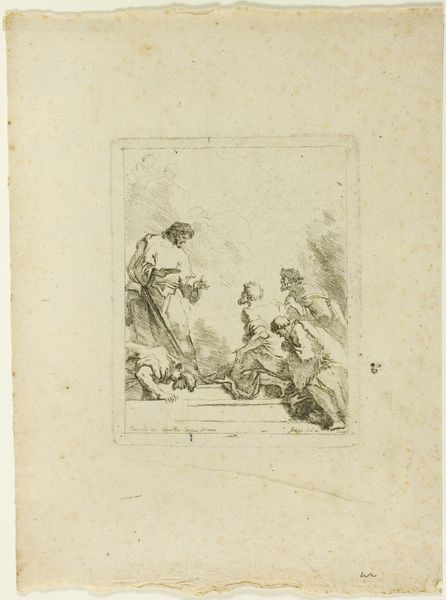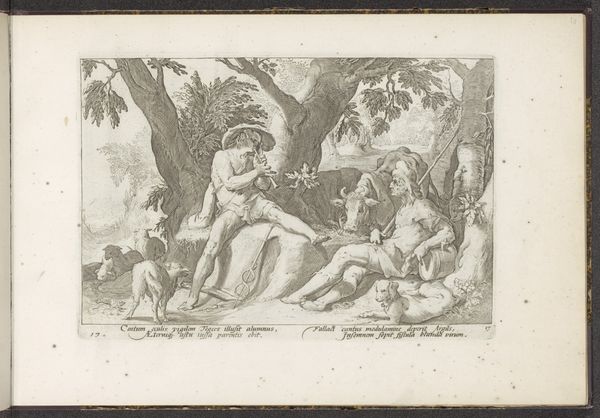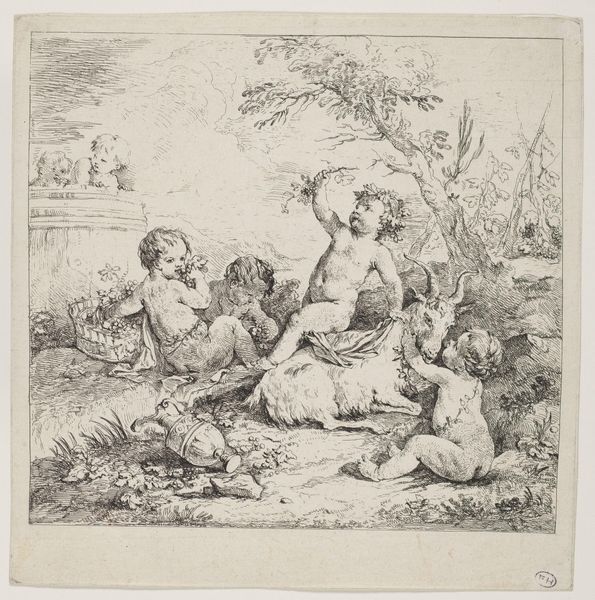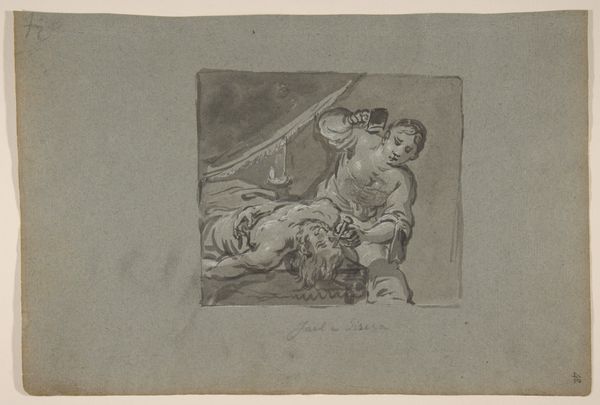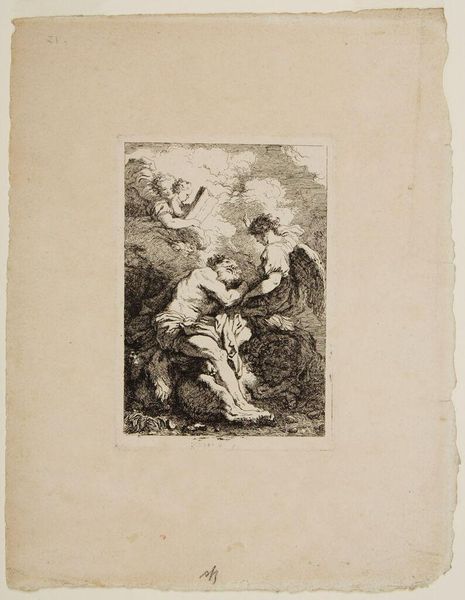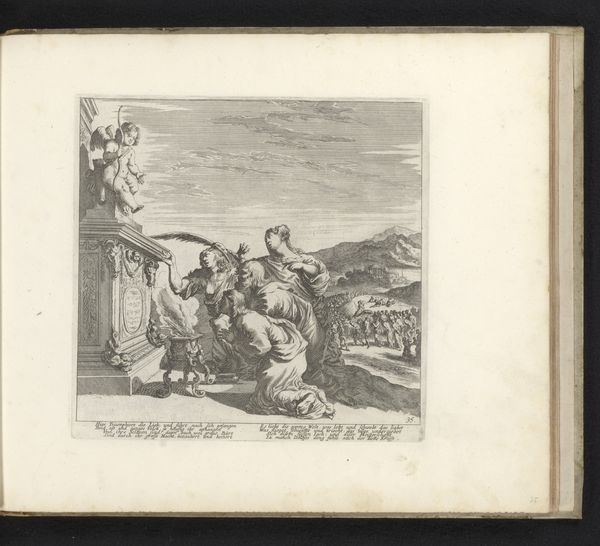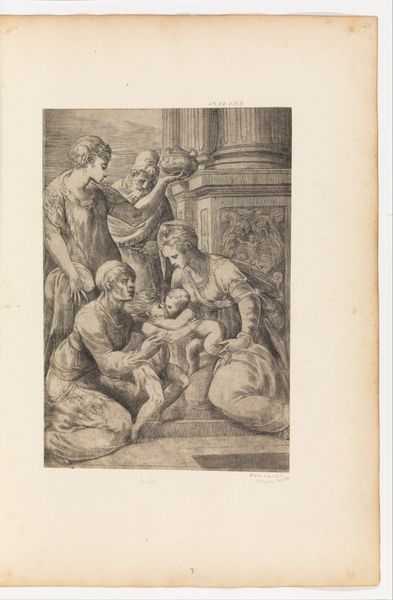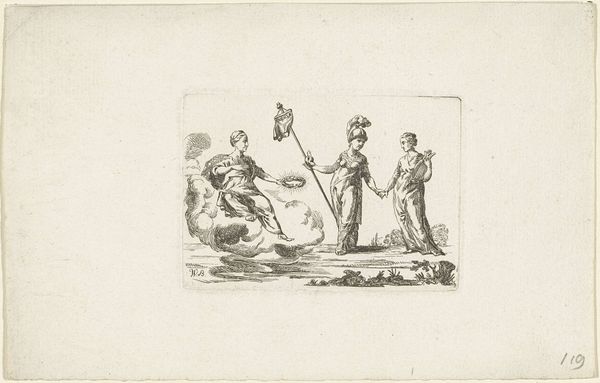
drawing, paper, ink
#
drawing
#
toned paper
#
light pencil work
#
baroque
#
pen sketch
#
pencil sketch
#
landscape
#
figuration
#
paper
#
personal sketchbook
#
ink
#
ink drawing experimentation
#
pen-ink sketch
#
pen work
#
sketchbook drawing
#
genre-painting
#
sketchbook art
Dimensions: height 110 mm, width 152 mm
Copyright: Rijks Museum: Open Domain
Curator: This is "Spinster met twee herdersjongen," or "Spinster with Two Shepherd Boys," a drawing by Cornelis Bloemaert, created sometime between 1700 and 1800. It's done with pen and ink on paper. Editor: It’s quite intimate in scale. Immediately, I’m drawn to the woman’s back—her posture suggests both weariness and strength. And the boys… they have an almost feral quality to them, clinging to her presence. Curator: Yes, I find myself focusing on the potential narratives here. Consider the loaded term "spinster" in this context. It designates more than just marital status; it signifies a specific socioeconomic position within a patriarchal structure. What does it mean to position her with these young shepherds? Editor: Symbolically, shepherds often represent guidance, innocence, and a connection to nature. Their presence could hint at themes of nurturing or even exploitation, perhaps highlighting the economic realities forcing children into labor. It evokes so many familiar themes found in art history. Curator: Absolutely. Are they a commentary on social dependency, or perhaps even an implied critique of traditional family structures? I find myself considering the ethics of depicting labor and innocence in this period. Whose gaze are we occupying as viewers? Editor: The way Bloemaert uses light and shadow is key here. Notice the way the lines coalesce around her form compared to the boys whose appearances seem almost transient or less grounded? She anchors the piece but they are dynamic; the transience gives them almost an allegorical appearance like virtues or concepts that shift over time. Curator: And isn't that telling? The image appears simple, but I keep wrestling with how our contemporary understandings of gender, class, and labor fundamentally shift how we view this scene. It raises complex ethical questions around representation. Editor: Agreed. This piece sparks essential discussions about our responsibilities when we engage with art from the past. I walked away wondering how people have found continuity between then and now. Curator: For me, it drives home the ongoing urgency of interrogating power dynamics, then and now, that's important. It's a stark depiction of class struggle and societal dependence, prompting reflection on what has truly changed and what remains unchanged.
Comments
No comments
Be the first to comment and join the conversation on the ultimate creative platform.
